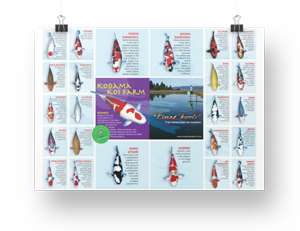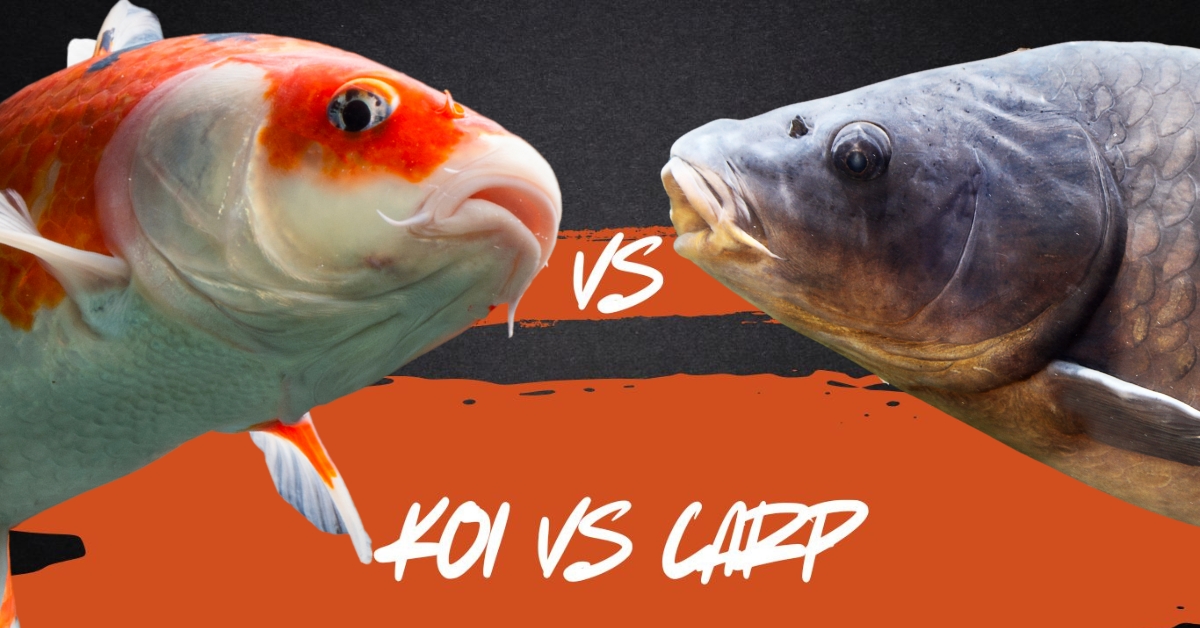
Are Koi and Carp the Same Thing? | Koi vs. Common Carp Explained
It’s a common question, especially among new pond owners and hobbyists. Yes, koi and carp are closely related. While both share the same genetic lineage, they serve very different purposes in the world of fishkeeping and aquaculture.
Koi are actually a domesticated and selectively bred variety of the common carp, originating in Japan hundreds of years ago. What began as a practical food source evolved into a beloved ornamental fish known for its vibrant colors and cultural symbolism.
In this guide, we’ll break down the key differences between carp and koi—covering their origin, genetic makeup, physical appearance, behavior, and how each is used in different settings. We’ll also explore why people often confuse them and help you clearly tell them apart.
By the end, you’ll not only understand the difference between koi and carp, but also feel confident choosing the right fish for your pond—or the right answer when the topic comes up with a fellow enthusiast.
Learn the difference between koi and carp, including their origin, appearance, and purpose. Discover how koi are related to common carp and what sets them apart.
Are Koi and Carp Related?: Same Species, Different Purpose
At the most basic level, both koi and carp belong to the same species: Cyprinus carpio, also known as the common carp. However, their similarities end there.
-
Common carp are wild or semi-domesticated fish often raised for food or sport fishing.
-
Koi fish, on the other hand, are selectively bred ornamental carp developed in Japan for their beauty, patterns, and coloration.

Think of koi as the fancy cousins of common carp—bred for show, not for supper.
What’s the Difference Between Koi and Carp?
Visual Differences: Color, Pattern, and Shape
The most noticeable difference between koi and carp lies in their appearance.
-
Koi come in a wide range of colors: white, black, red, orange, yellow, and blue—often combined in striking patterns like the popular Kohaku (red and white) or Showa (red, white, and black).
-
Common carp are typically dull in color, ranging from olive green to brown or gray.
Koi also tend to have:
-
Longer, more elegant fins
-
A sleeker, more refined body shape
-
A slightly more upturned mouth designed for surface feeding
By contrast, common carp are bulkier, with short fins and a body built for muddy rivers and lakes—not decorative ponds.
Carp Fish Appearance
The common carp (Cyprinus carpio) is a large, freshwater fish with a distinctive appearance characterized by a sturdy, elongated body and two barbels near its mouth. Its scales vary from bronze and golden tones to dark gray, often with a metallic sheen. Typically, carp have a broad, rounded head and a powerful, fan-like tail, enabling them to navigate various water conditions. Fins are generally tinted with hues of red or orange, enhancing their visibility in the water. Carp also exhibit adaptability in size, color, and scale patterns, making them one of the most diverse and recognizable fish species worldwide.
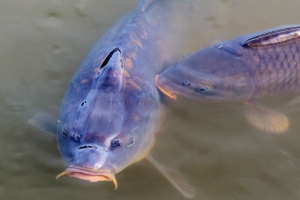
Carp Facts:
- Wild Species – Carp are found naturally in rivers and lakes, particularly in Europe and Asia.
- Dull Coloration – Unlike koi, wild carp typically have drab colors like brown and green.
- Highly Invasive – Carp are considered an invasive species in many parts of the world.
- Bottom Feeders – Carp stir up sediment while foraging, which can disrupt ecosystems.
- Resilient – Carp are hardy fish that can survive in poor water conditions.
- Fast Growers – Carp can grow rapidly in nutrient-rich environments, reaching up to 4 feet.
- Wide Range of Habitats – Carp thrive in rivers, lakes, and ponds with slow-moving water.
- Long History – Carp have been kept as food fish for thousands of years across many cultures.
- Eaten Worldwide – Carp are consumed as food in many countries, especially in Asia and Europe.
Koi Fish Appearance
Koi are celebrated for their vivid colors and intricate patterns, available in red, white, black, yellow, blue, and more.
These different koi colors contribute to their visual appeal and symbolic richness. Each koi’s unique markings make it a stunning work of art, appreciated in competitions and shows. In contrast, common carp typically have plain, muted colors like brown or olive, lacking the brilliance and design that make koi so visually captivating. For a pond that impresses, koi’s ever-changing palette is unmatched.
Beyond ponds, koi carp have become icons in the art world—especially in koi fish tattoo design—because of their bold visual impact and symbolic meaning.
Their flowing shapes and striking contrasts translate beautifully into ink, making a koi fish tattoo a popular choice for expressing strength, perseverance, and transformation. One of the most appealing aspects of a koi fish tattoo is its versatility in design and koi tattoo placement—from full back pieces to elegant arm, leg, or shoulder tattoos, allowing for creative expression that fits the body’s natural lines.
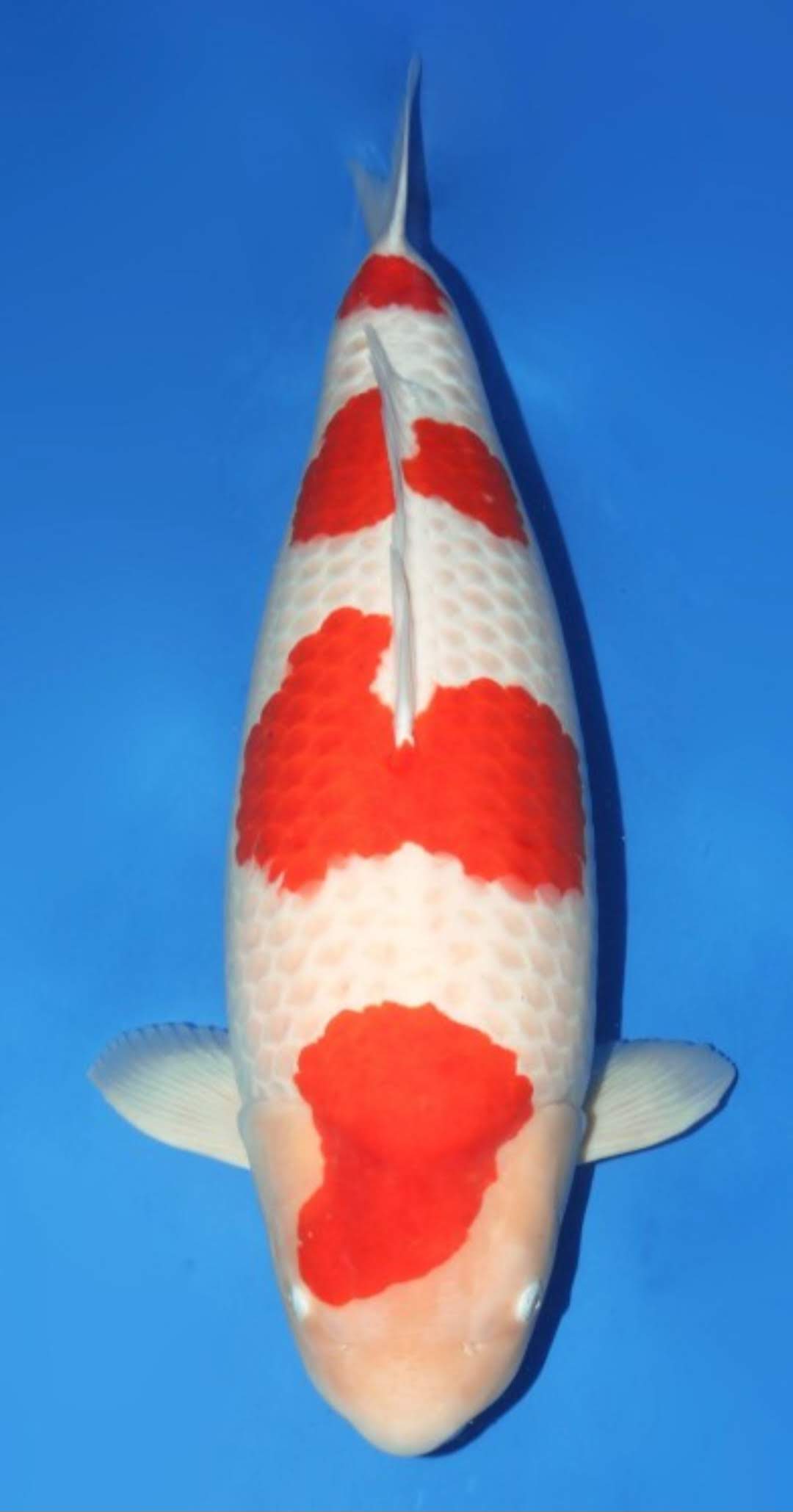
KOI FACTS
- Domesticated Carp – Koi are ornamental, selectively bred from wild carp.
- Brightly Colored – Koi are known for their vibrant colors like red, white, yellow, and black.
- Symbols of Good Luck – In Japanese culture, koi represent success and perseverance.
- Long Lifespan – Koi can live for 25-35 years, with some living over 100 years.
- Smooth Swimming – Koi swim elegantly and are a popular feature in garden ponds.
- Cold-Water Fish – Koi can survive in cold temperatures but are most active in warmer waters.
- Require Careful Water Quality – Koi ponds need high water quality to keep the fish healthy.
- Non-Aggressive – Koi are peaceful fish and can live with other species.
- Grow Based on Environment – Koi can grow up to 3 feet, depending on their habitat size.
- Intelligent and Trainable – Koi recognize their feeders and can be hand-fed.
Where can you buy koi fish? At Kodama Koi Farm, we offer a diverse selection of high-quality koi, perfect for enhancing any water garden. Discover your ideal Nishikigoi and bring vibrant color and elegance to your pond.
You may also Check Out Our Live Koi Collection.
Types of Carp: Identifying Common, Mirror, Leather, and Other Wild Carp Species
Carp are a fascinating and varied group of freshwater fish, each type with unique features and behaviors that set them apart.
Here are some Types of Carp:
Common Carp
Olive brown fish with large scales

Mirror Carp
Irregular, large, reflective scales
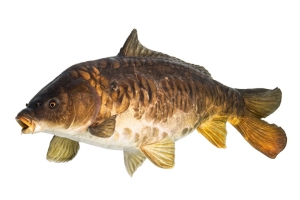
Leather Carp
Mostly scaleless with smooth skin.
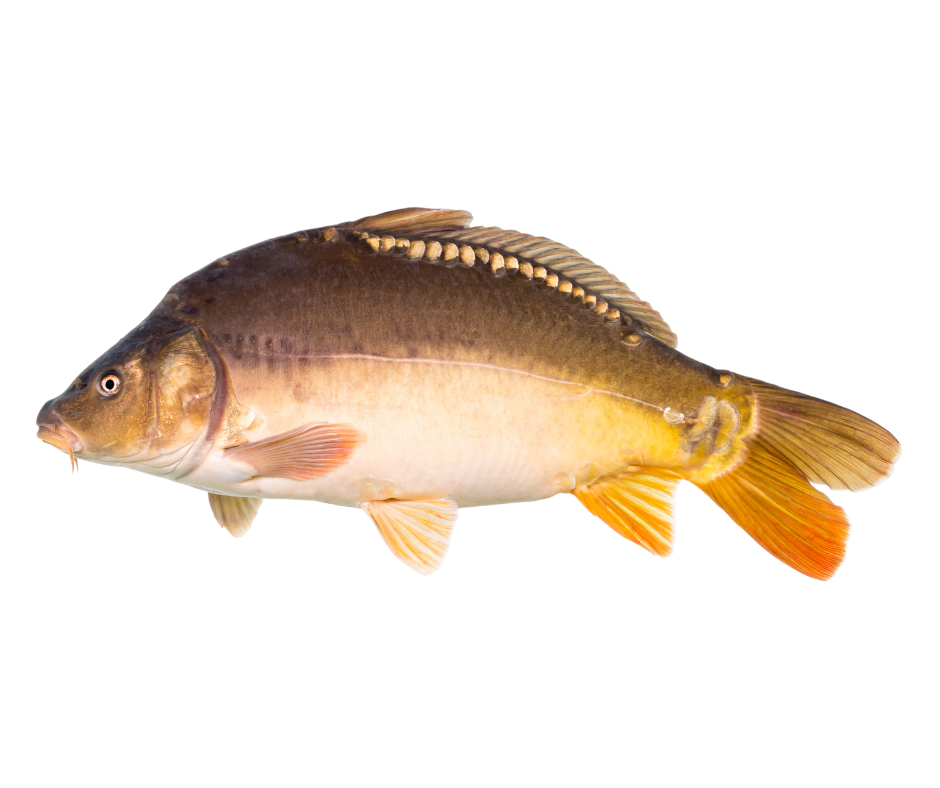
Bighead Carp
Large, mottled, filter-feeding adapted species.
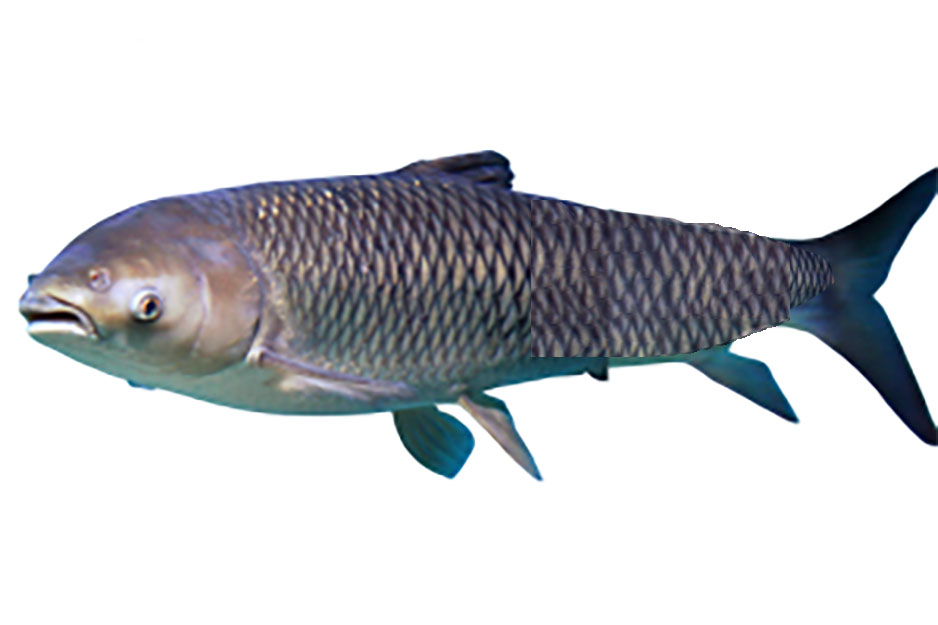
Grass Carp
Long, slender with greenish scales
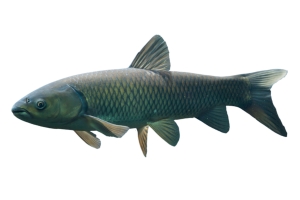
Silver Carp
Silvery carp with a large head
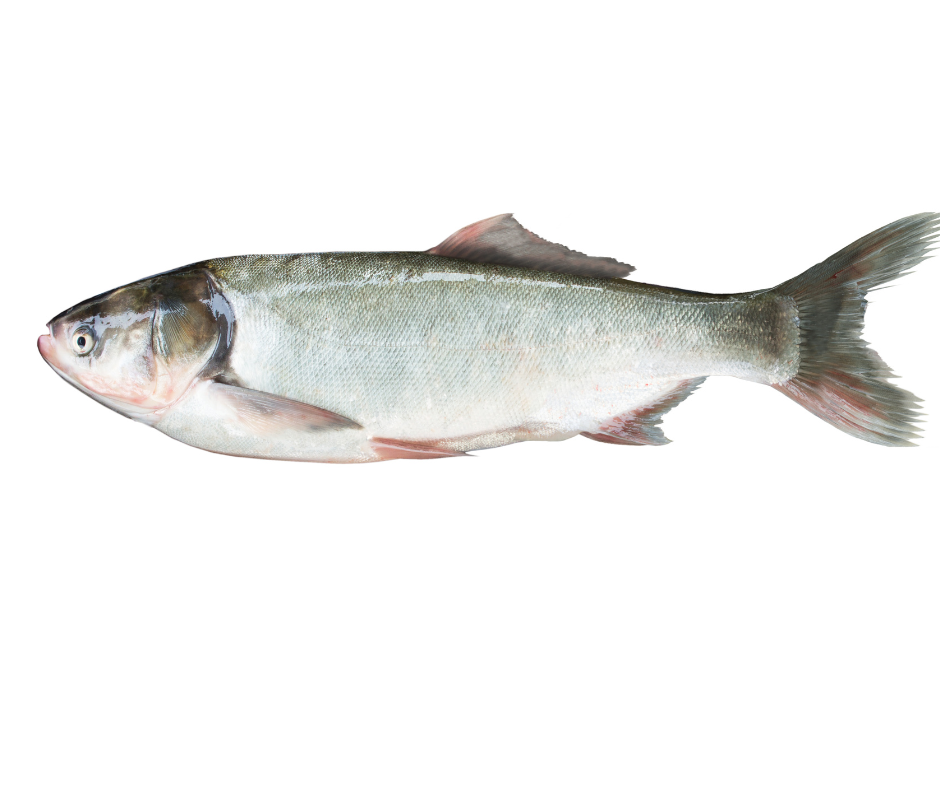
Discover the Legacy of Nishikigoi
Explore the enchanting world of Nishikigoi, koi fish that embody beauty and deep cultural significance, at Kodama Koi Farm. Our page on What Is Nishikigoi: History & Meaning delves into their fascinating evolution from common carp to the revered ornamental fish they are today.
Why Nishikigoi Matters
Nishikigoi are living symbols of perseverance and grace, rich in Japanese tradition. On our page, you’ll learn about: 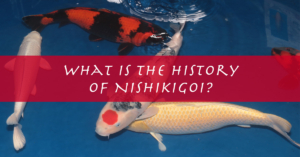
- Cultural Significance: The deep meanings behind koi in Japanese culture.
- Breeding Practices: The meticulous methods that create stunning colors and patterns.
- Varieties of Koi: Discover the unique characteristics of different koi types.
Ready to enrich your pond with Nishikigoi? Visit our page to learn more and find the perfect koi for your water garden. Explore the Legacy of Nishikigoi Now!
Pond Size and Design Requirements for Common Carp
Choosing the right pond size and design is essential for healthy carp growth. Carp need spacious ponds, ideally at least 1,000 gallons, to thrive and swim freely. Depth should be around 3 feet to provide temperature stability and protection from predators.
Incorporate gentle slopes and aquatic plants for natural filtration and shelter. Proper pond design ensures optimal oxygen levels, water quality, and a safe environment, promoting vibrant, healthy carp.
If you’re interested in koi pond guides and tips, check out Expert Tips for Maintaining and Fixing Koi Pond Issues!
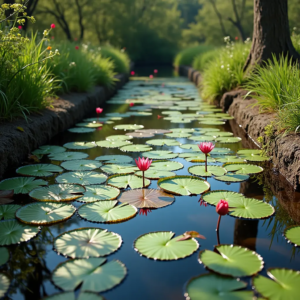
Carp Feeding and Nutrition: Essential Tips for Healthy Growth
Proper feeding and nutrition are vital for healthy carp growth and vibrant colors. One key difference between koi and carp lies in their dietary needs—while both benefit from high-quality food, koi are often fed premium color-enhancing diets to support their ornamental appearance.
Provide a balanced diet rich in proteins, vitamins, and minerals to support their immune system and energy needs. Feed carp small amounts 2–3 times daily, adjusting portions based on water temperature and activity. Avoid overfeeding to maintain water quality. Using high-quality commercial carp pellets alongside occasional natural treats ensures your carp stay healthy and thrive.
Learn more about petting and feeding koi fish.
Koi vs Carp: Choosing the Right Fish for Your Pond
In conclusion, while koi and carp share a common ancestry, their differences in appearance, behavior, and cultural significance set them apart. If you’re wondering, are koi and carp related?—the answer is yes. Koi are a domesticated and ornamental variety of common carp, selectively bred for their vibrant colors and graceful patterns.
Koi are cherished not only for their beauty but also for their symbolic meanings in Japanese culture, representing perseverance and strength. On the other hand, common carp, though less colorful, are known for their resilience and adaptability in various environments.
Whether you’re drawn to the stunning aesthetics of koi or appreciate the robust nature of carp, both fish offer unique contributions to aquatic ecosystems and the joy of pond enthusiasts. Understanding these differences can help you choose the right fish for your pond and enhance your aquatic experience. We invite you to explore our pages to discover more about Japanese koi fish.

